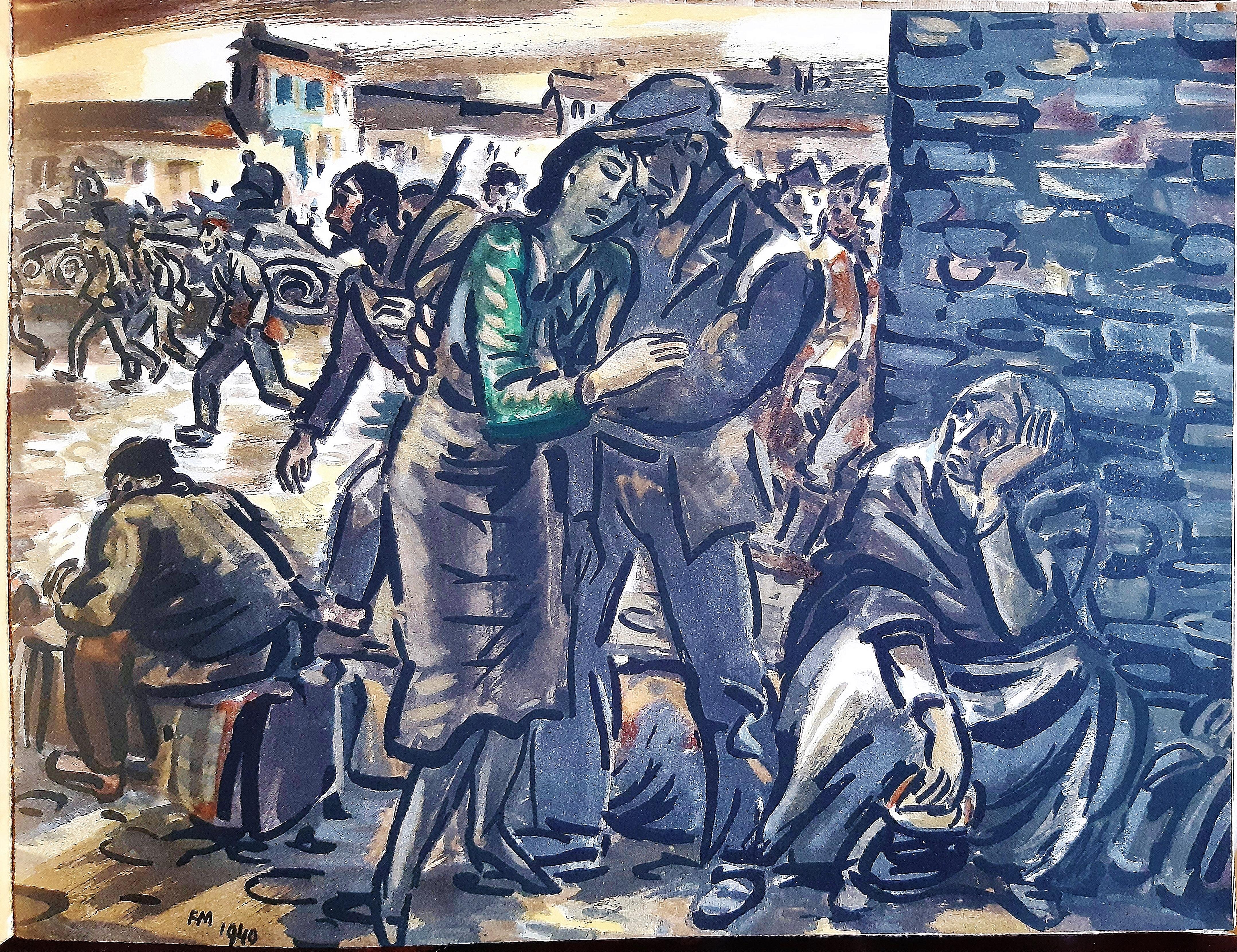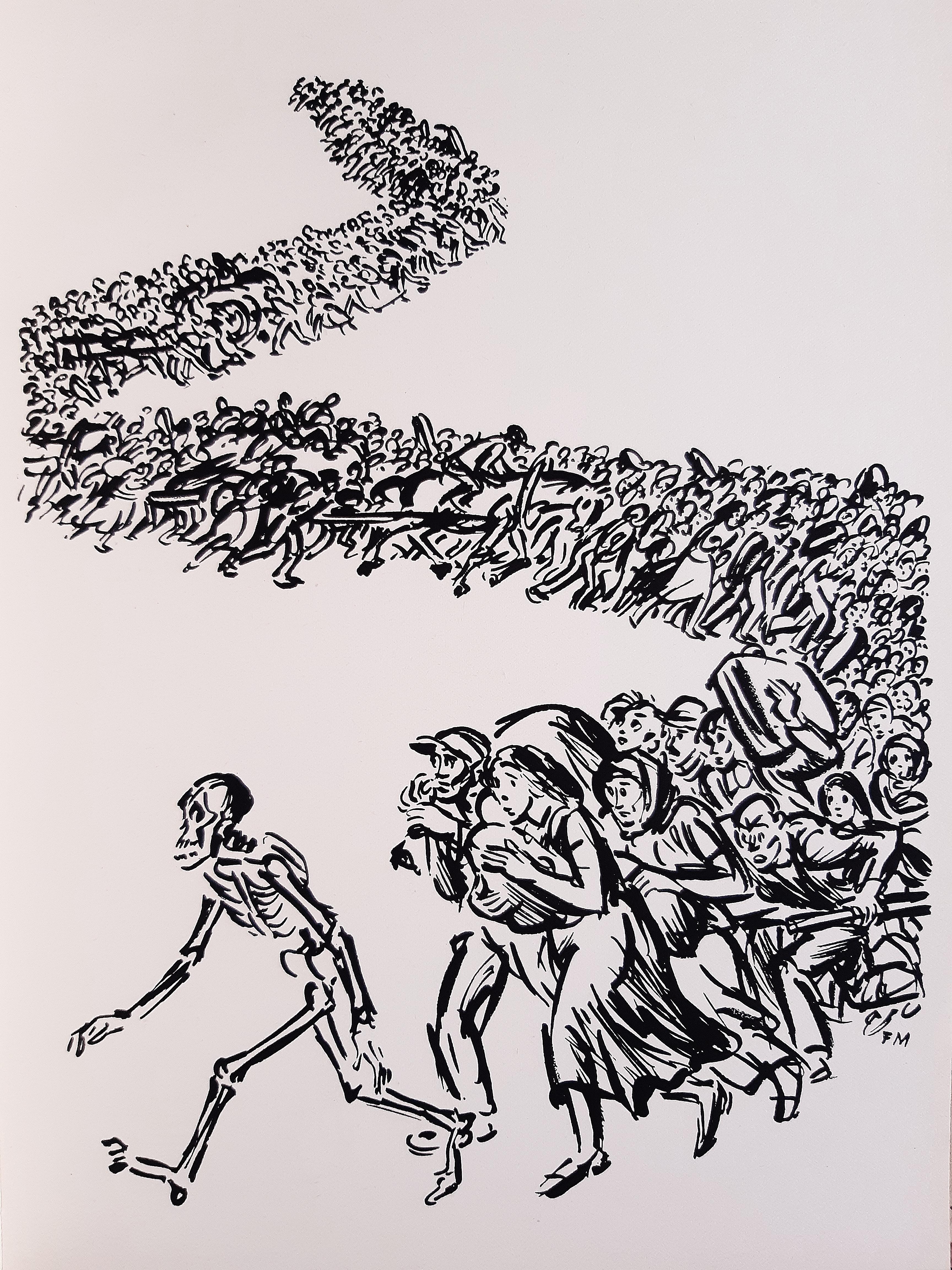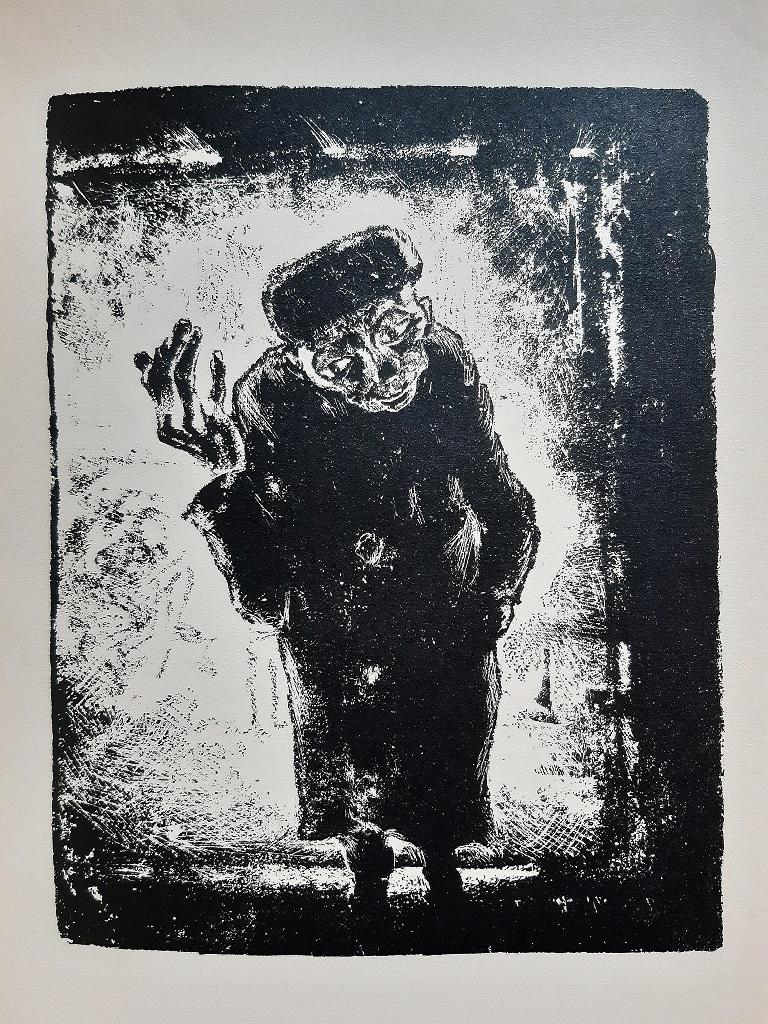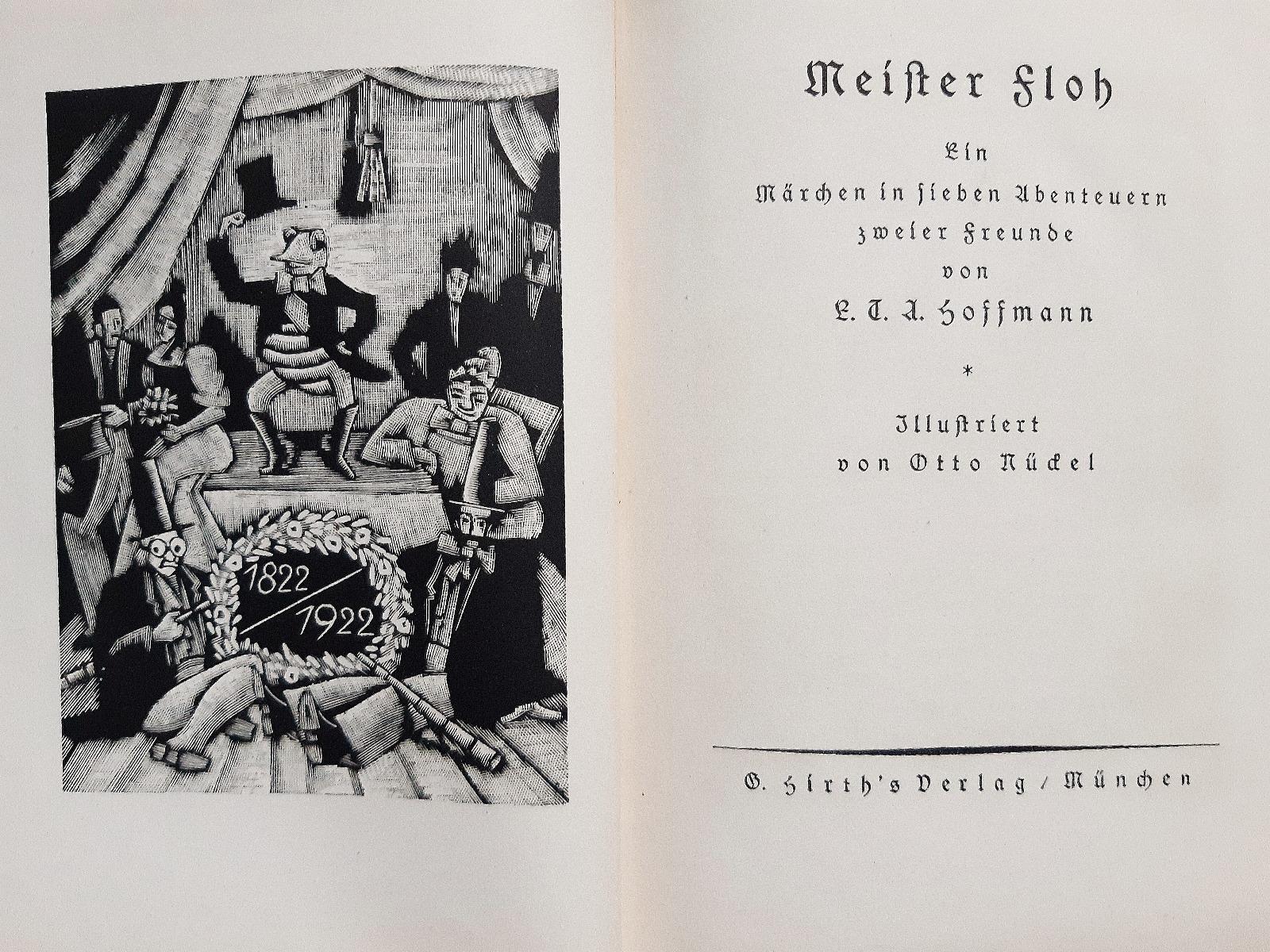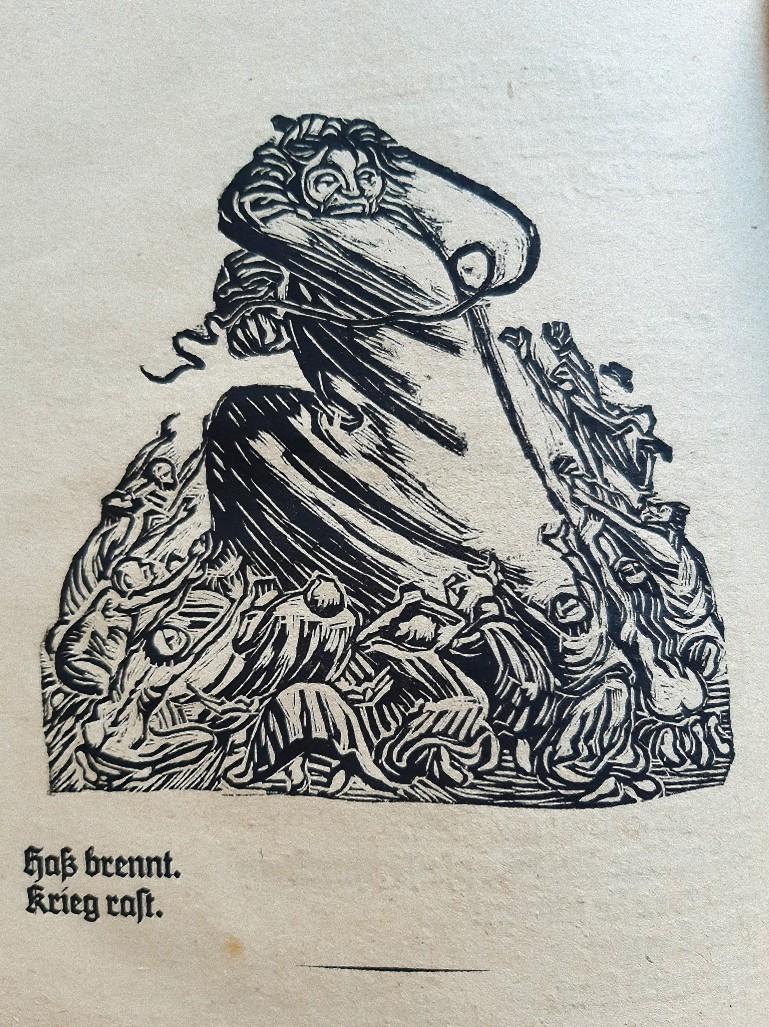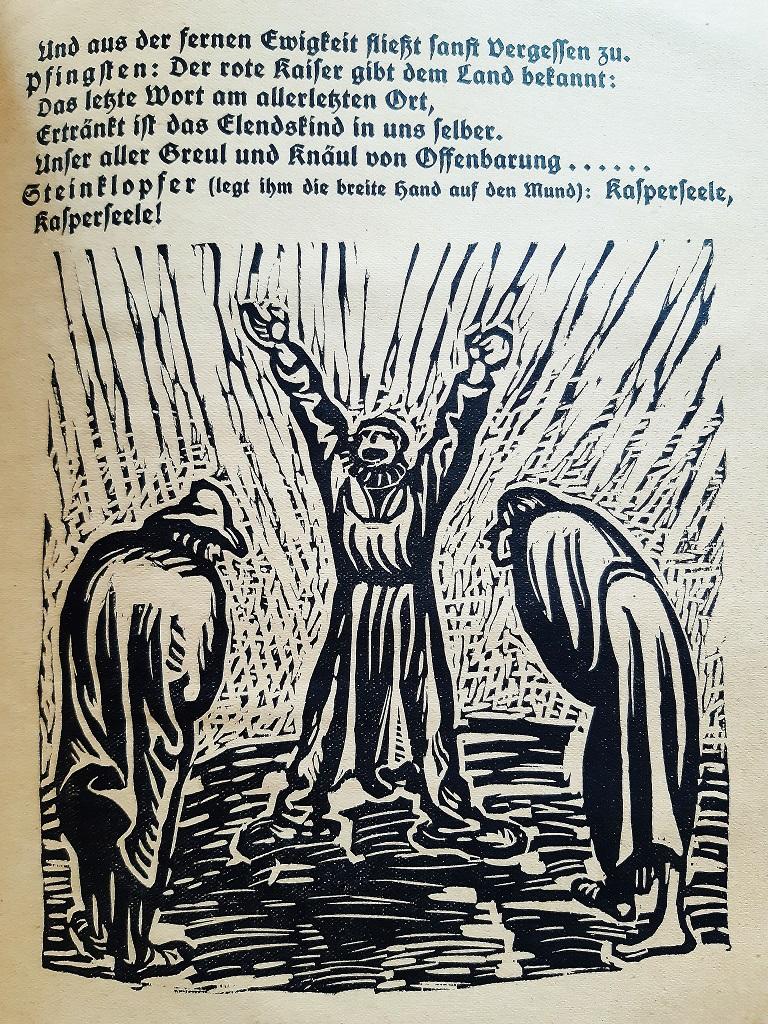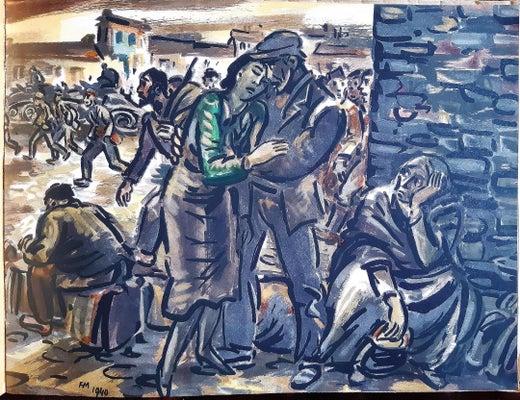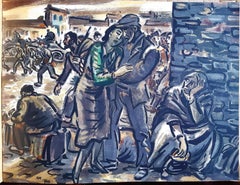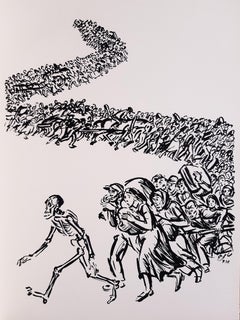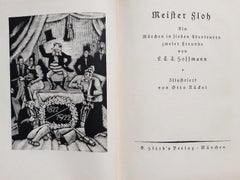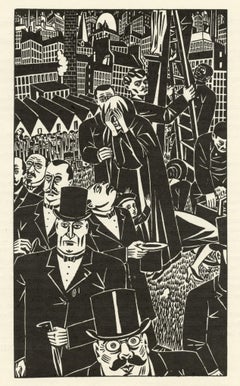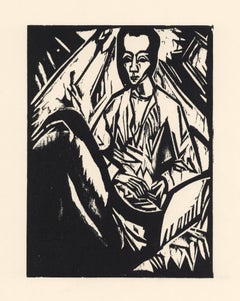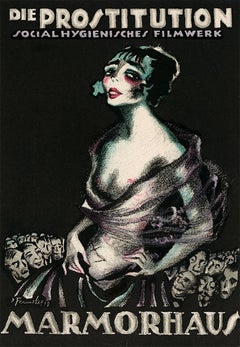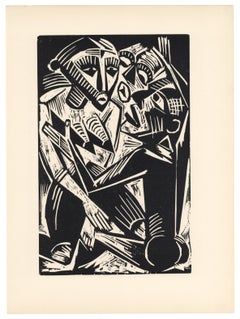Items Similar to Die Mutter - Rare Book Illustrated by Frans Masereel - 1919
Want more images or videos?
Request additional images or videos from the seller
1 of 8
Frans MasereelDie Mutter - Rare Book Illustrated by Frans Masereel - 19191919
1919
$572.99
£425.19
€480
CA$799.16
A$865.69
CHF 455.82
MX$10,507.65
NOK 5,684.64
SEK 5,374.69
DKK 3,655.01
About the Item
Die Mutter is an original Rare Book illustrated by Frans Masereel (1889 – 1972) and written by Leonhard Frank (Würzburg, 1882 – Munich, 1961) in 1919.
Original Edition.
1000 numbered copies.
Published by Max Racher Verlag, Zurich.
Format: Large 8°. The dimensions and the weight are indicative.
The book includes 45 pages with 9 full page woodcuts.
Good conditions.
Frans Masereel (1889 – 1972). He was a Flemish painter and graphic artist who worked mainly in France, known especially for his woodcuts focused on political and social issues, such as war and capitalism. He completed over 40 wordless novels in his career, and among these, his greatest is generally said to be Passionate Journey. Masereel's woodcuts influenced Lynd Ward and later graphic artists such as Clifford Harper, Eric Drooker, and Otto Nückel.
Leonhard Frank (Würzburg, 1882 – Munich, 1961). He was a German expressionist writer. He studied painting and graphic art in Munich, and gained acclaim with his first novel The Robber Band. When a Berlin journalist celebrated in a famous café about news of the loss of the ship RMS Lusitania, torpedoed by a German submarine, Frank was upset – and slapped the man in his face. That is why he went into exile in Switzerland (1915–18), where he wrote a series of pacifist short-stories published under the title Man is Good. He returned to Germany, but after the Nazis gained power in 1933 Frank had to emigrate a second time. He lived in Switzerland again, moved to London, then Paris and finally fled under adventurous conditions to the United States in 1940, returning to Munich in 1950. His best-known novels were In the Last Coach (1925, tr. 1935) and Carl and Anna, which he dramatized in 1929. In 1947 MGM made a movie titled Desire Me out of this story.
- Creator:Frans Masereel (1889 - 1972, Belgian)
- Creation Year:1919
- Dimensions:Height: 11.03 in (28 cm)Width: 7.09 in (18 cm)Depth: 0.4 in (1 cm)
- Medium:
- Movement & Style:
- Period:
- Condition:Insurance may be requested by customers as additional service, contact us for more information.
- Gallery Location:Roma, IT
- Reference Number:Seller: T-1204281stDibs: LU65038308992
Frans Masereel
In 1921 Masereel returned to Paris, where he painted his famous street scenes, the Montmartre-paintings. He lived for a time in Berlin, where his closest creative friend was George Grosz. After 1925 he lived near Boulogne-sur-Mer, where he painted predominantly coast areas, harbour views, and portraits of sailors and fishermen. During the 1930s the number of illustrated books and single woodcuts decreased. In 1940 he fled from Paris and lived in several cities in the South of France.
About the Seller
4.9
Platinum Seller
Premium sellers with a 4.7+ rating and 24-hour response times
1stDibs seller since 2017
7,740 sales on 1stDibs
Typical response time: 2 hours
- ShippingRetrieving quote...Shipping from: Roma, Italy
- Return Policy
Authenticity Guarantee
In the unlikely event there’s an issue with an item’s authenticity, contact us within 1 year for a full refund. DetailsMoney-Back Guarantee
If your item is not as described, is damaged in transit, or does not arrive, contact us within 7 days for a full refund. Details24-Hour Cancellation
You have a 24-hour grace period in which to reconsider your purchase, with no questions asked.Vetted Professional Sellers
Our world-class sellers must adhere to strict standards for service and quality, maintaining the integrity of our listings.Price-Match Guarantee
If you find that a seller listed the same item for a lower price elsewhere, we’ll match it.Trusted Global Delivery
Our best-in-class carrier network provides specialized shipping options worldwide, including custom delivery.More From This Seller
View AllJuin 40 - Rare Book Illustrated by Frans Masereel - 1912
By Frans Masereel
Located in Roma, IT
Juin 40 is an original Rare Book illustrated by Frans Masereel (1889 – 1972) in 1912.
Original Edition.
Précédé de “Fragments d’un journal de guerre 1940” de Henry de Montherlant.
1550 numbered copies.
Published by Pierre Tisné, Paris.
Format: Oblong 4°. The dimensions and the weight are indicative.
The book includes 32 + 7 Pages with 32 Full page Lithographs.
Good conditions.
Frans Masereel (1889 – 1972). He was a Flemish painter and graphic artist who worked mainly in France, known especially for his woodcuts focused on political and social issues, such as war and capitalism. He completed over 40 wordless novels in his career, and among these, his greatest is generally said to be Passionate Journey. Masereel's woodcuts influenced Lynd Ward and later graphic artists such as Clifford Harper, Eric Drooker, and Otto Nückel. Masereel's woodcuts influenced Lynd Ward and later graphic artists such as George Walker, Clifford Harper, Eric Drooker, and New Yorker cartoonist Peter Arno. Masereel's woodcut series, mainly of sociocritical content and expressionistic in form, made Masereel internationally known. Among them were the wordless novels 25 Images of a Man's Passion (1918), Passionate Journey (1919), The Sun (1919), The Idea (1920), Story Without Words (1920), and Landscapes and Voices (1929). At that time Masereel also drew illustrations for famous works of world literature by Thomas Mann, Émile Zola, and Stefan Zweig.
Category
1940s Modern More Art
Materials
Lithograph
Danse Macabre - Rare Book Engraved by Frans Masereel - 1941
By Frans Masereel
Located in Roma, IT
Danse Macabre is an original Rare Book illustrated by Frans Masereel (1889 – 1972) in 1941.
Original Edition.
950 numbered copies.
Published by Lang, ...
Category
1940s Contemporary More Art
Materials
Photogravure
Der Mantel - Rare Book Illustrated by Walter Gramatté - 1919
By Walter Gramatté
Located in Roma, IT
Der Mantel is an original modern rare book written by Nikolaj Vasil'evič Gogol'-Janovskij (Velyki Soročynci, 1809 - Moscow, 1852) and illustrated by Walter Gramatté (Berlin, 1897 –...
Category
1910s Modern More Art
Materials
Paper, Lithograph
Meister Floh - Vintage Rare Book Illustrated by Otto Nückel - 1922
Located in Roma, IT
Meister Floh is an original modern rare book illustrated with woodcut engravings by Otto Nückel (Cologne, 1888 – Cologne, 1955) in 1922 and written by Ernst Theodor Amadeus Hoffma...
Category
1920s Modern More Art
Materials
Paper, Woodcut
Der Kopf - Rare Book Illustrated by Ernst Barlach - 1919
By Ernst Barlach
Located in Roma, IT
Der Kopf is an original Rare Book llustrated by the Expressionist German artist Ernst Barlach (1870- 1938) and written by Reinhold von Walter (St. Petersburg, 1882 - Ravensburg, 196...
Category
1910s Expressionist More Art
Materials
Woodcut
Der Findling - Rare Book Engraved by Ernst Barlach - 1922
By Ernst Barlach
Located in Roma, IT
Der Findlich is an original Rare Book illustrated by the Expressionist German artist Ernst Barlach (1870- 1938) in 1922.
Original First Edition.
Format: in 4°.
Published by Paul Cassirer, Berlin.
The book includes 77 pages and Twenty several full page woodcuts.
Mint conditions.
Ernst Barlach (1870- 1938), a German expressionist sculptor, printmaker and writer. His participation in the war made him change his position, and he is mostly known for his artworks protesting against the war. Barlach trained under French artists and produced Art Nouveau-style sculpture and works on paper, but at first unable to find success. This led to a trip to Russia where the artist began creating figurative sculptures inspired by early Gothic art, carving spiritual and emotional themes from hard-woods and bronze casts. Barlach's fame increased after the war, he received many awards and became a member of the prestigious Preußische Akademie der Künste ( Prussian Art Academy) in 1919. He was a supporter of the war in the years leading to World War I, he generated many anti-war sculptures...
Category
1920s Expressionist More Art
Materials
Paper, Engraving
You May Also Like
(after) Frans Masereel "Le Calvaire"
By Frans Masereel
Located in Henderson, NV
Medium: collotype (after the woodcut). Printed in 1925 and published in Paris by Albert Morance for "L'Art d'Aujourd'hui", and now very scarce. Image size: 8 x 4 3/4 inches (205 x 11...
Category
1920s Expressionist Prints and Multiples
Materials
Photogravure
"Krankes Mädchen" original woodcut
By Erich Heckel
Located in Henderson, NV
Medium: original woodcut. Printed in 1920 for the Deutsche Graphiker der Gegenwart portfolio, and published in Leipzig by Klinkhardt & Biermann in an edition of 500. Catalogue refere...
Category
1920s Expressionist Figurative Prints
Materials
Woodcut
Die Prostitution by Josef Fenneker, Weimar silent film poster, Anita Berber 1919
By Josef Fenneker
Located in Chicago, IL
Original lithograph of Josef Fenneker’s German Expressionist poster design for the 1919 silent film Die Prostitution starring Anita Berber ...
Category
1910s Expressionist Prints and Multiples
Materials
Lithograph
"Woman Desired by Man" original woodcut
By Max Pechstein
Located in Henderson, NV
Medium: original woodcut. Printed in 1920 for the Deutsche Graphiker der Gegenwart portfolio, and published in Leipzig by Klinkhardt & Biermann in an edition of 500. Catalogue refere...
Category
1920s Expressionist Figurative Prints
Materials
Woodcut
(after) Frans Masereel "Melancolie"
By Frans Masereel
Located in Henderson, NV
Medium: collotype (after the woodcut). Printed in 1925 and published in Paris by Albert Morance for "L'Art d'Aujourd'hui", and now very scarce. Image size: 7 7/8 x 5 1/4 inches (200 ...
Category
1920s Expressionist Prints and Multiples
Materials
Photogravure
Erich Heckel German Expressionist Woodblock Print, 1919 "Dostoevski's Idiot"
By Erich Heckel
Located in Phoenix, AZ
Erich Heckel (1883-1970) Original Woodblock print, 1919.
“Dostoevski's Idiot (Final Scene)”
Unframed and in excellent condition.
Image size: 9 3/4" H x 11 1/2" W.
In a 16" H x 20" ...
Category
Early 20th Century Figurative Prints
Materials
Paper
More Ways To Browse
Flemish Painters
Antique Book Pages
Writer Painting
French Woodcut
Rms Ship
Black And White Photos Dancing
1980s Signed And Numbered Art
Roma Vintage
Black White Landscape Photography
Black And White Paris Photo
Vintage Lithographs
Black And White Photography Ballet
Pop Art Lithograph
Original Travel Posters
Mark Gray
Large Scale Sculptures
Atelier Vintage Paris
Limited Edition Prints Framed
